OSI offers a variety of optional Software Capability Modules and features that extend ECPINS 6’s main capabilities in navigation and situational awareness. A customer can purchase any selection of these for a specific vessel, vessel class, or flotilla, or for use fleet-wide.
Some Software Capability Modules are central to a System Capability Module, which is an optional capability that can be added to an OSI bridge system. A System Capability Module is a combined package of a Software Module, hardware, and installed equipment.
OSI will continuously refine and expand the capabilities offered within each module over software generations.
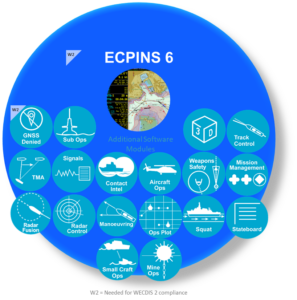
3D Plot
 Extends ECPINS’s powerful proprietary chart display engine to the on-demand generation of a three dimensional view derived from any installed vector charts. The operator can adjust the scale, angle, and detail of this view, over which can be laid contacts, routes, areas, chart objects, and a 3D rendition of the own ship.
Extends ECPINS’s powerful proprietary chart display engine to the on-demand generation of a three dimensional view derived from any installed vector charts. The operator can adjust the scale, angle, and detail of this view, over which can be laid contacts, routes, areas, chart objects, and a 3D rendition of the own ship.
Contact Intel
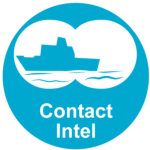
Facilitates the efficient monitoring, identification, and screening of contacts, including importing, exporting and streaming to other systems. These capabilities are intended for the use of the experienced watch officer operating in high-traffic areas.
On a vessel equipped with a secure AIS transponder, Warship AIS features are available such as the creation of virtual AIS contacts. Secure data coms on AIS channel A or B is possible using STEDS (Secure but Unclassified Tactical Information Exchange and Display).
Manoeuvring
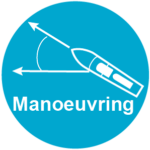
Facilitates precise navigation by providing a specialized conning display, ideal for use at the helm position, facilitates route tracking, docking, and refuelling at sea. A relative velocity calculator enables the operator to quickly determine the optimal route to pass a target or take station on it at a specific range & bearing.
Mission Management

Enables the multi-mission patrol craft to supplement its WECDIS navigation capability with an essential level of mission management. The resulting system capitalizes on the sensor array, track monitoring, and familiar user interface already in place with ECPINS to present a dedicated Mission Management panel that enhances the bridge crew’s threat evaluation, decision making, and weapon assignment capabilities. This module supports the integration of additional sensors such as ESM, OBD, and gun azimuth, and data exchange including TDL. Other ECPINS modules, such as Contact Intel, TMA, and 3D Plot) offer features that further enhance those of Mission Management.
Radar Control
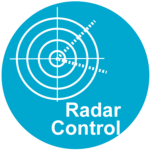 Where a vessel is equipped with digital navigation radar, this module provides direct control of the radar. From within the familiar ECPINS software environment, the operator can tune the radar, adjust range, set blank sectors, and switch between Transmit, Standby, and Off. For tactical work, Radar Control optimizes target tracking and enables ARPA contact acquisition and the association of AIS and ARPA contacts. The operator has access to standard radar features such as EBLs and parallel indices, relative vectors, and trial manoeuvres. Underneath the radar returns, the powerful ECPINS chart display engine and uses the same charts, routes, and waterspaces available in the rest of the system. On the dual screen layout, the operator has the option of using Intelligent Target Detection to improve the visual discriminate of targets.
Where a vessel is equipped with digital navigation radar, this module provides direct control of the radar. From within the familiar ECPINS software environment, the operator can tune the radar, adjust range, set blank sectors, and switch between Transmit, Standby, and Off. For tactical work, Radar Control optimizes target tracking and enables ARPA contact acquisition and the association of AIS and ARPA contacts. The operator has access to standard radar features such as EBLs and parallel indices, relative vectors, and trial manoeuvres. Underneath the radar returns, the powerful ECPINS chart display engine and uses the same charts, routes, and waterspaces available in the rest of the system. On the dual screen layout, the operator has the option of using Intelligent Target Detection to improve the visual discriminate of targets.
Radar Control is certified against IEC 62388 (Shipborne Radar Performance) to integrate and control radars of the Hensholt KH Sharpeye, Furuno FAR300 series, and Sperry VMNet.
Squat
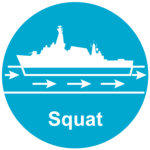
Useful where a vessel’s draft alters according to squat, this module enables the operator to have ECPINS alter the safety depth along specific route legs according to the vessel’s squat characteristics at the current or planned speed.
Small Craft Ops
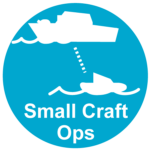 This add-on enables an ECPINS system, when combined with an encrypted AIS unit such as the Saab R5S, to communicate with one or more of its small craft, where those craft are equipped with OSI’s T-ACT system. The resulting encrypted inter-communication enables the mothership operator to see the small crafts’ location and send them contacts of interest, routes, areas, and text messages. In return, the mothership can receive text replies and soundings from the small craft, which can see the mothership as well as each other.
This add-on enables an ECPINS system, when combined with an encrypted AIS unit such as the Saab R5S, to communicate with one or more of its small craft, where those craft are equipped with OSI’s T-ACT system. The resulting encrypted inter-communication enables the mothership operator to see the small crafts’ location and send them contacts of interest, routes, areas, and text messages. In return, the mothership can receive text replies and soundings from the small craft, which can see the mothership as well as each other.
Target Motion Analysis (TMA)
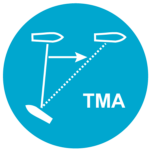
The Target Motional Analysis package — also known as passive contact development — enables the watchkeeping team to plot the likely location, heading, and speed of a contact based on bearing and estimated range reports from relevant sensors plotted at intervals. Particularly relevant to submariners, this module can also be used by surface vessels using a sensor such as a towed array.
Weapons Safety

Provides tools that enable the operator to increase safety margins when firing guns, torpedoes, or missiles. The Dog Box enables the operator to plot on the chart a dog box at the location where a torpedo left control; the box expands according to torpedo speed and running time until it is projected to be out of fuel. Engagement path enables the operator to plot a weapon path, typically an SSM, from the own ship to a target contact.
Aircraft Ops
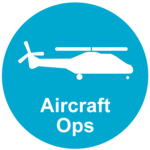 Enables the bridge crew to handle the ship in such as way as to maintain the conditions for safe aircraft operations. A SHOL screen (Ship Helicopter Operating Limits) gives the operator a real-time graphical display of relative wind, pitch and roll, aircraft status, and more. The operator can display single or multiple flight deck spots, displayed separately or merged. The operator can instantly apply any SHOL plate, selected by aircraft type, operation, and weight. An editor enables the creation of a vessel-specific bespoke SHOL plate library. Since SHOL automatically makes what were laborious manual calculations and indicates optimal speed and heading, this module is a valuable addition to the bridge of any vessel equipped with a flight deck.
Enables the bridge crew to handle the ship in such as way as to maintain the conditions for safe aircraft operations. A SHOL screen (Ship Helicopter Operating Limits) gives the operator a real-time graphical display of relative wind, pitch and roll, aircraft status, and more. The operator can display single or multiple flight deck spots, displayed separately or merged. The operator can instantly apply any SHOL plate, selected by aircraft type, operation, and weight. An editor enables the creation of a vessel-specific bespoke SHOL plate library. Since SHOL automatically makes what were laborious manual calculations and indicates optimal speed and heading, this module is a valuable addition to the bridge of any vessel equipped with a flight deck.
GNSS-Denied

Facilitates the determination of position in circumstances where a position fix derived from a global navigation satellite system is not available (for example, under water), unreliable (due for example to spoofing, signal obstruction, or a lack of satellites), or being denied (for example, jamming by the enemy). Auto dead reckoning with Pool of Errors display and management is central to the feature set, along with the new Blind Pilotage Tool (dead reckoning along a planned pilotage route relying on radar fixing for estimated position) which works with both radar image overlay and the Radar Control module. Typically of particular interest to submarine navigators, these features are fast becoming essential for surface navigators.
Mine Ops
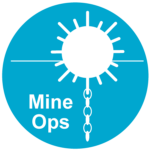
Facilitates mine countermeasures by displaying mine-like objects from a connected mine database, sonar, or combat management system. These MLOs are displayed on the chart, including at depth in the 3D view.
Ops Plot
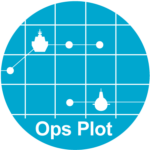
Offer tools for the planning and review of passages, operations, and exercises. Route Traceback enables a navigator to create a new route on the basis of a past track – that of the own ship, other ship, or contact, or from a log file. Data from a log can include sounded depths on each route segment.
Radar Fusion
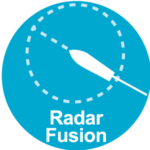
Fuses the image and contacts from two radars into a single 360° picture. Works with both analog and digital radars. The operator works with the single image as a third radar source.
Signals
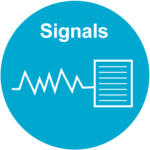
Enables the operator to import a NATO-standard signal, such as a SUBNOTE, into ECPINS, which can automatically plot navigational elements such as a route, PIM, or area.
Sub Ops
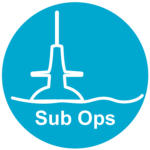
Essential for submarine platforms, this module enhances subsurface voyage planning and execution with features such as dived safety depth, dived depth display, enhanced INS position display, and a screen layout devoted to conning a sub.
Stateboard

This module provides a screen layout that presents the Officer of the Watch a synopsis of navigational and operational conditions. This enables the OOW to monitor the voyage, flag events, set alerts, log notes, and hand over the watch in an efficient manner.
Together with the customer, OSI selects and configures the stateboard’s fields for each vessel or vessel class. Sample data categories include: Command, Operations, Ship State, Weather, Notes, Boats, Aircraft, Coms, Equipment, Sensor State, Reporting Policy.
Track Control
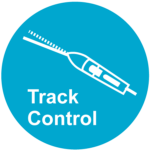 Where a vessel is equipped with a Raytheon Anschutz autopilot, this module enables the bridge crew to have ECPINS control that autopilot so that the vessel automatically steers along the route designated as active. Control extends along legs (great circle or rhumb line), through turns (constant radius, advance and transfer, etc.), and through to the final waypoint.
Where a vessel is equipped with a Raytheon Anschutz autopilot, this module enables the bridge crew to have ECPINS control that autopilot so that the vessel automatically steers along the route designated as active. Control extends along legs (great circle or rhumb line), through turns (constant radius, advance and transfer, etc.), and through to the final waypoint.

